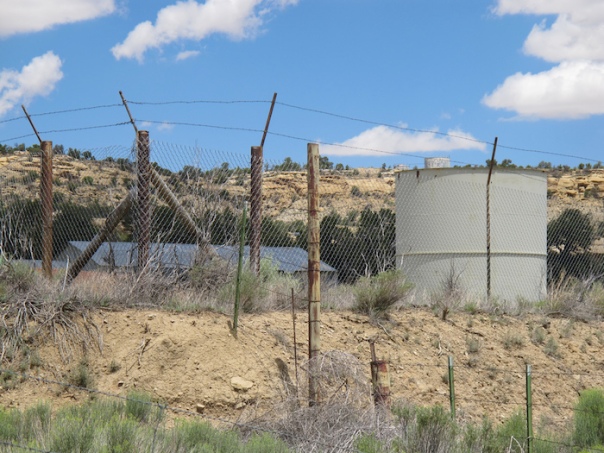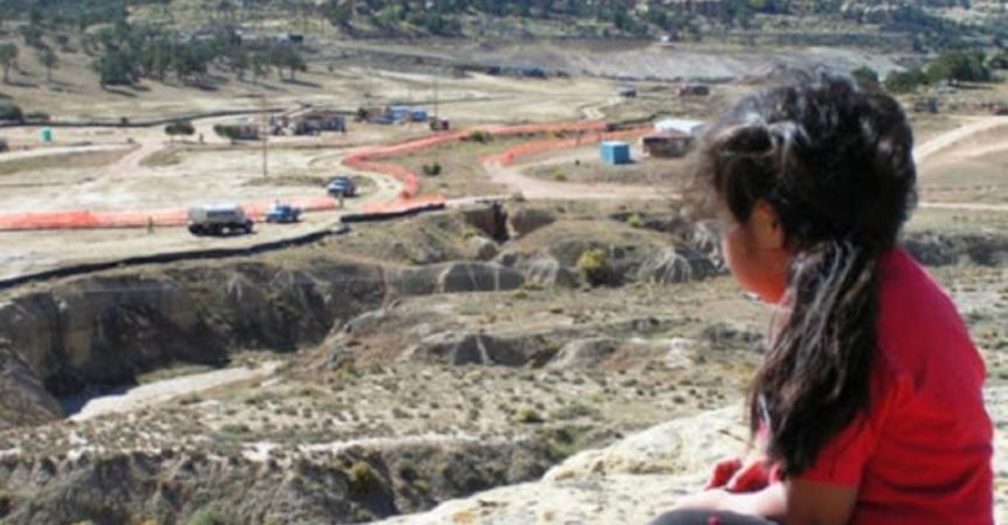“We simply want a healthy livable community where we can safely live a good life. Where we can grow old and raise our grandchildren. I am hoping that soon we will not have to see the piles of uranium waste in our front yards – a constant reminder of what each family has experienced and the after-effects of this tragedy.”
— Navajo Tribe Member Anna Benally
Navajo community contaminated by uranium suffers loss of loved ones and livestock
By Anna Benally
My name is Anna Benally and I am a member of the Navajo Tribe. I am a resident of Redwater Pond Road Community and have lived here all my life. My clan is Redhouse and Yellow Meadow people. I am currently a registered voter with Coyote Canyon Chapter House.
I remember at a very young age when mining came into our community. It was the United Nuclear Corporation (UNC) and Kerr-McGee companies that moved operations in about one mile from where I resided. The two mines were about a half mile from each other. The mine operation was a 24/7 operation in my backyard for about ten to fifteen years of my life.

During this time, my mother, Mildred Benally, was a homemaker, rug weaver and had livestock, sheep, goats, horses and cattle. My father, Tom Benally, was a Medicine Man which was handed down from his dad. This was also the same for his brother, Frank Benally, my uncle. He was married to Marita Benally, a sister to my mother Mildred. They all lived at the Black Tree Standing area. Tom was also a member of the Grazing Committee for the Coyote Canyon Chapter House for 8 years. After that he started working for UNC as a laborer. This included repairing lamps and cleaning dressing rooms for workers.
During my childhood days, my siblings and I were instructed to herd sheep. It was a priority to make sure that the livestock were well taken care of, especially watering them daily. Raising livestock was our way of life and that was the way we understood the importance of respecting them and treating them as members of the family. Having livestock made us feel complete so it was important to take care of them. In addition, we also used some of our sheep as a source of food for traditional ceremonials and other family gatherings.
UNC had a dewatering pond just over the hill, less than a mile away where we were told to water our livestock. We took them often to this pond and did this for years until the mine closed. We were never warned nor informed that this water was not safe for drinking or that there could be a possibility of contamination. Our livestock was then poisoned, leaving it contaminated from the water they drank. Our family and friends also ingested these contaminated animals leaving them at risk from the contamination.
For years the dust control was also never considered important. There were trucks hauling uranium off to Grants for milling. On these transport days the uranium dust would be kicked up, filling the air so badly leaving us all to breathe it in. It has affected our breathing through the development of asthma and has weakened our respiratory system making us dependent on the use of inhalers. Additionally it affected our sinuses as we’ve developed nasal infections requiring us to regularly use over the counter medications in order to alleviate our symptoms. The dust also affected our eyes. They are continuously dry and must have artificial tear drops to keep them moist.
In addition to respiratory, sinus and eye troubles, many of us have experienced headaches and aching joints as a result of the uranium. Not only can it be a nuisance but it many cases it can be so debilitating that it makes even simple house chores impossible. These ailments I have described are the milder struggles we have faced. Many others haven’t been quite so fortunate but rather have struggled with renal or liver failure, cancer and for some, death.

As for me, I was employed at Kerr-McGee as a maintenance clerk and mine supply clerk from 1976-1982, a total of 6 years. My duties as maintenance clerk involved office work, but also required me to handle contaminated clothing and materials. It was my responsibility to exchange used tools and dirty, wet slickers (jackets and pants) with the miners after coming up from the mine. With them they brought huge buckets that were filled with wet, muddy uranium from underground making it highly contaminated. My only “protection” from this contamination was a hardhat and steel toed shoes. In addition to my lack of protection, I was never informed about the possibility of devastating illnesses resulting from contamination due to my being in close proximity with these toxic materials.
In 1979 the United Nuclear Corporation experienced a uranium spill that made the national news and earned the title of the United States’ largest uranium spill to date. Because of this spill, many lives have been affected on the Navajo reservation, specifically the Church Rock area. There was an increase in strange medical conditions of both people and livestock. Not to mention the devastating effects to the land! This was a tragic time in all the lives of the families that were associated with this spill. There are cancers, various types of illnesses and many homes left with no fathers to support their families. Many of the miners died of cancer and respiratory problems thereafter.

To this day, we continue to live on ground zero because this is our homeland and forty years later we are still trying to get the mining company to remove all contaminated waste that was left behind. We simply want a healthy livable community where we can safely live a good life. Where we can grow old and raise our grandchildren. I am hoping that soon we will not have to see the piles of uranium waste in our front yards – a constant reminder of what each family has experienced and the after effects of this tragedy.
As a mother and grandmother, I will continue to advocate for my children, grandchildren and community so that we all may be able to enjoy a contamination-free home where we can have the simple opportunity to live, learn and enjoy the gifts of Mother Earth.
With this testimony, I hope that you will see the resilience of the people of the Redwater Pond Community. We have learned to live our lives with the presence of poison still lingering in our homeland. Because of our strong desire to live, and live well, we have learned how to best protect our families and homes, children and grandchildren. We have learned the importance of sharing our experiences with others and as a result have become stronger. Our desire is to speak on behalf of Mother Earth who was so ravaged, both through the mining and through the spill, that she has not yet recovered. And from her illness, many of us have been left to suffer the same fate.
In conclusion, I request that the damage that was done to our community, our families and to Mother Earth be amended. We have waited nearly 40 years for reconciliation, for the land to be made well again and for our families to not live in fear. I request a thorough and complete clean-up of the remaining uranium be done, and that following the clean-up, regular tests on the water and soil be completed in order to ensure that only safe levels remain.
Finally, I request a thorough health study be done on the members of the original mining community and on their children, grandchildren and beyond. It is our right to both understand the full effects of this devastating accident and be empowered with the knowledge of how best we can move forward. Our community will continue to stand strong and independent and will strive toward harmony with Mother Earth as we advocate on behalf of a cleaner, safer environment. This is my testimony.

